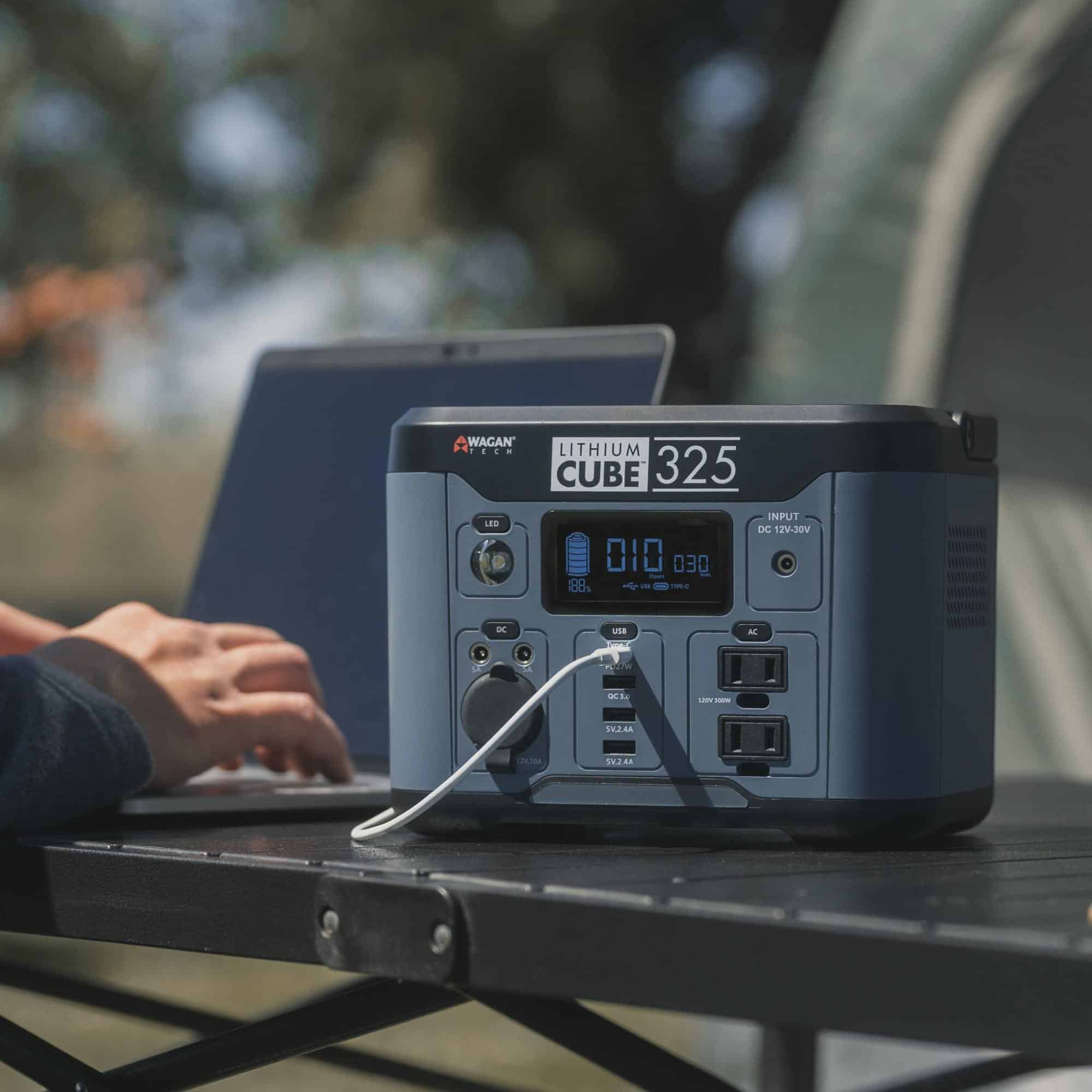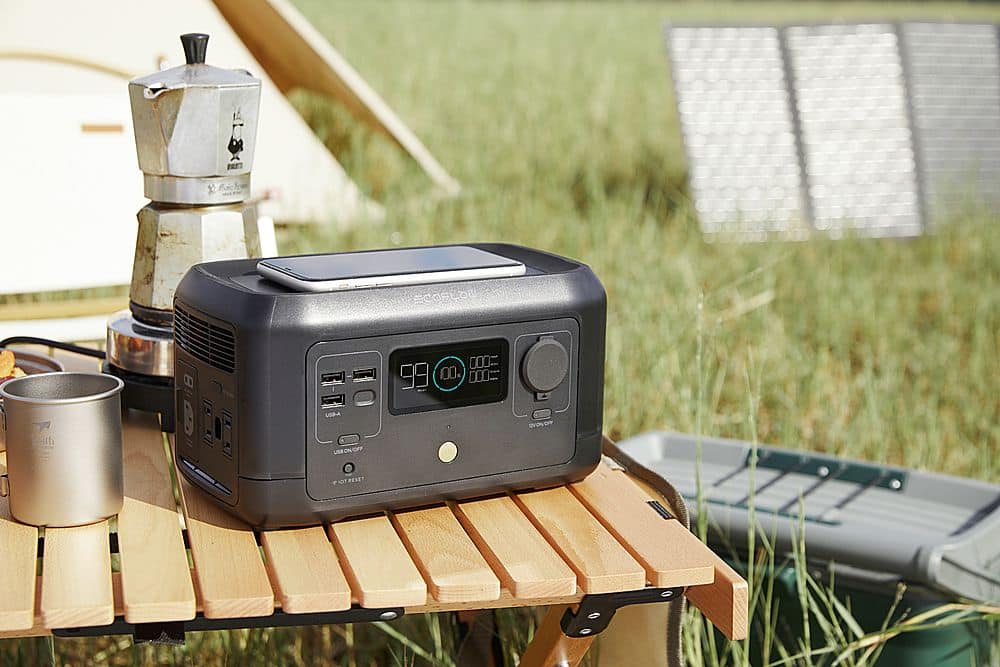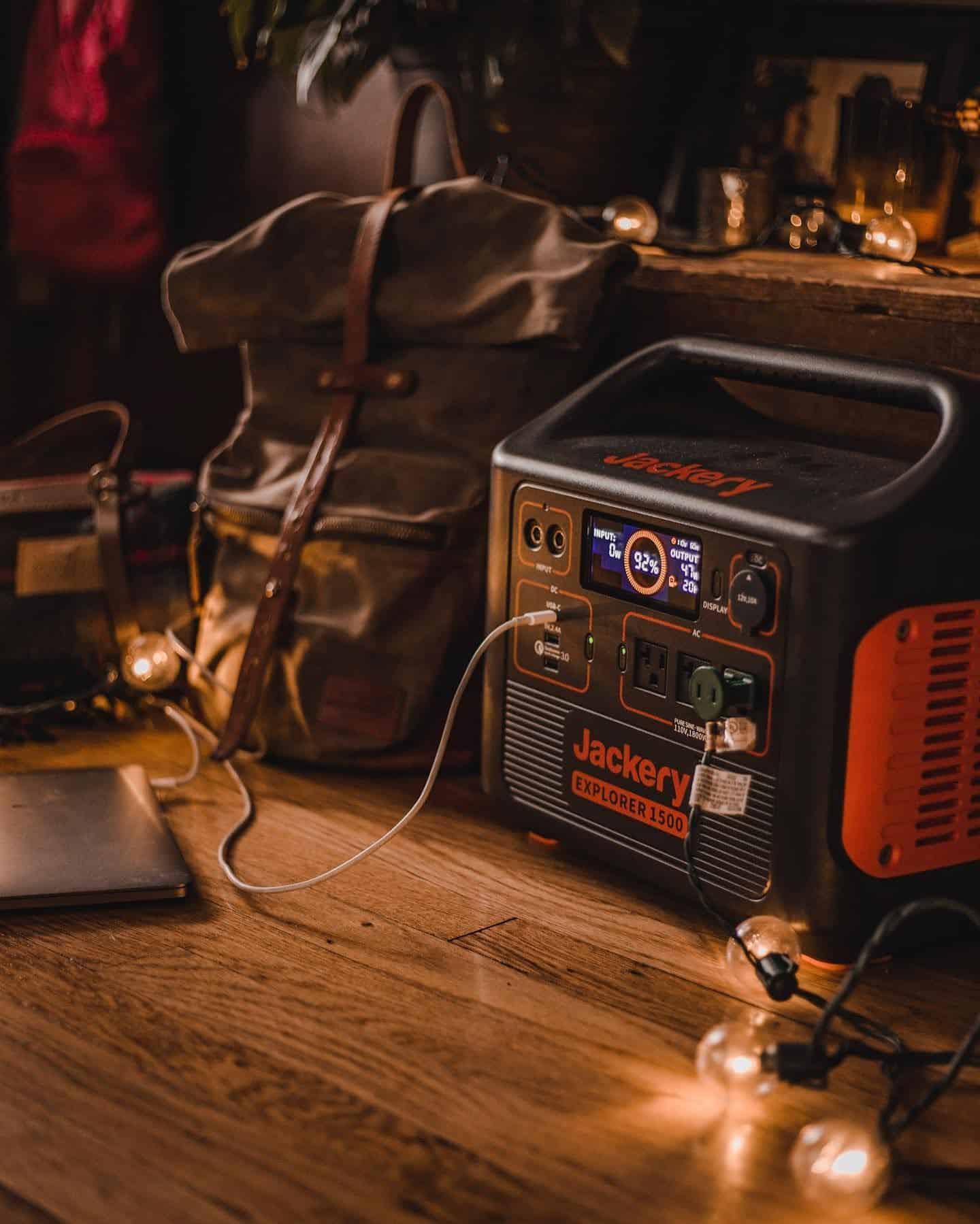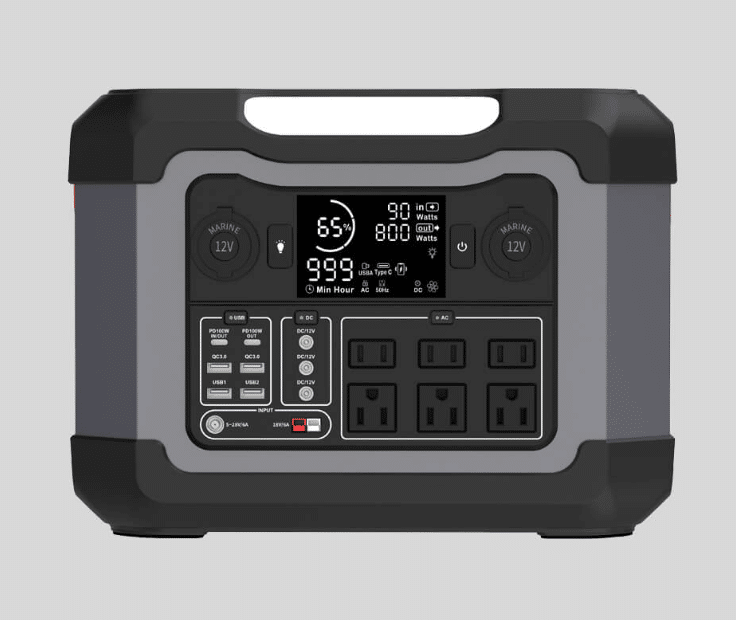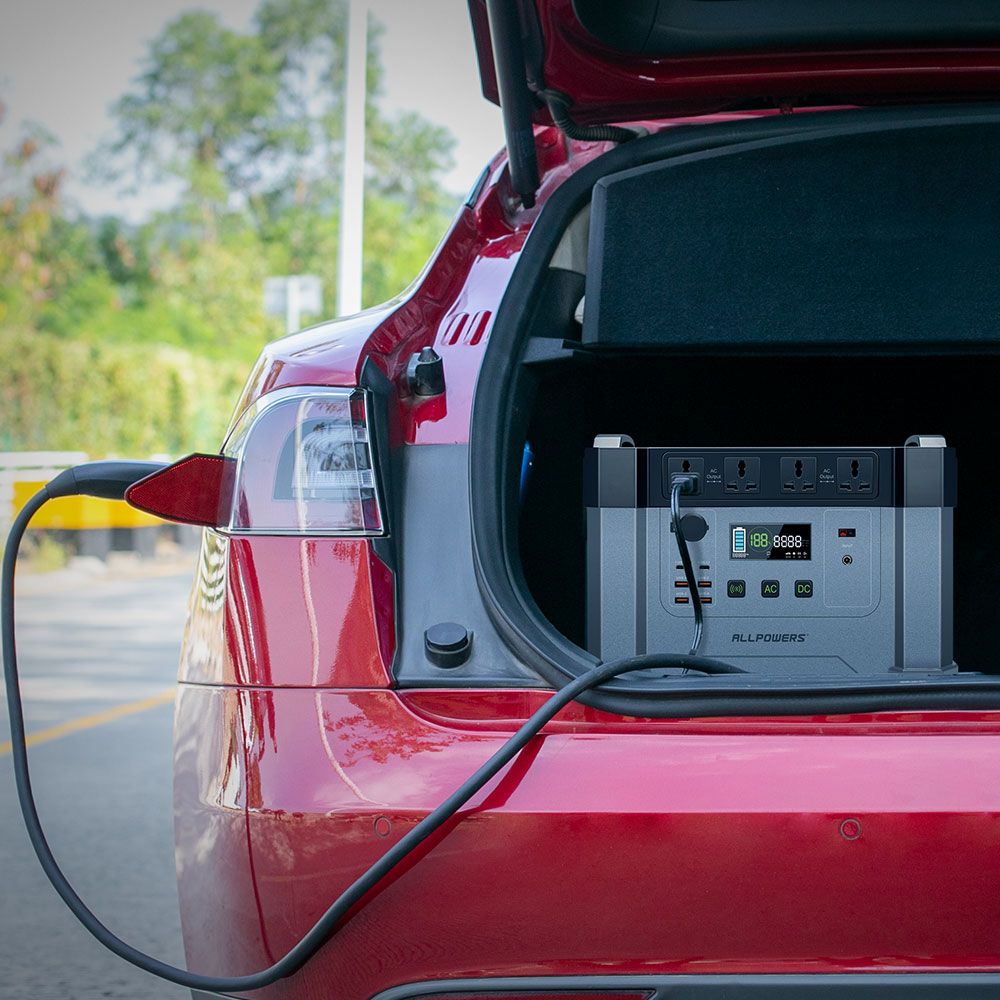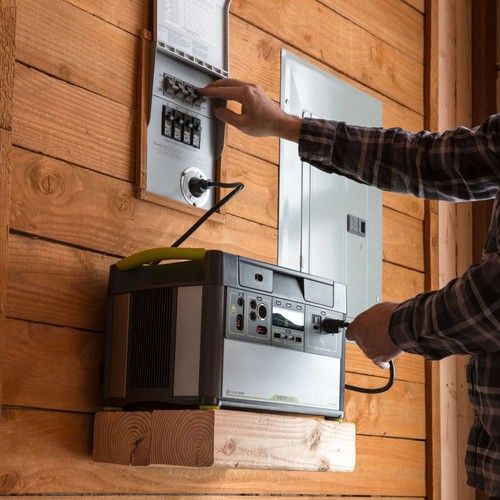What is solar battery storage?
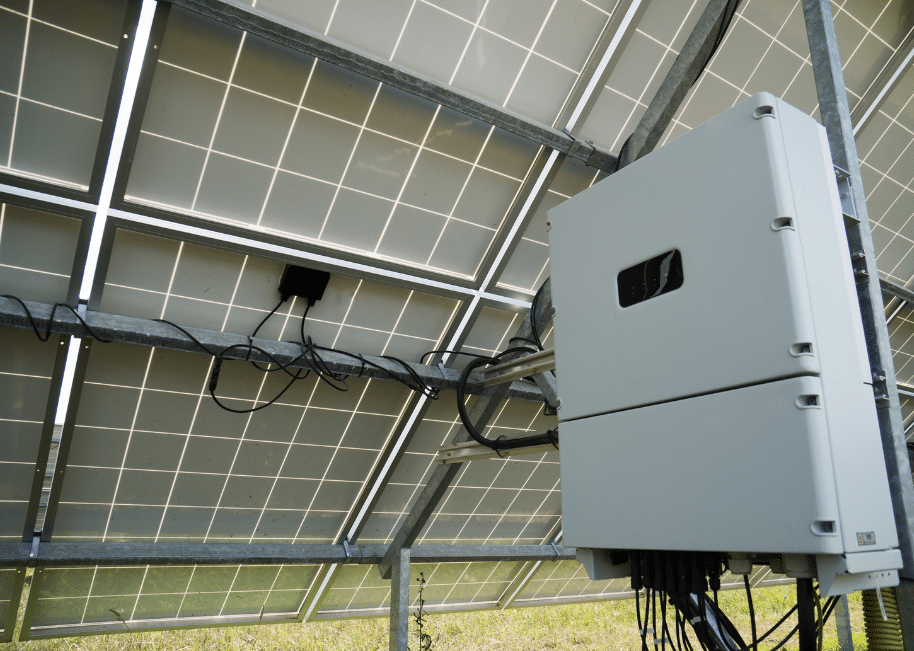
Image Source: Canva
You may make your solar power system more efficient by including a solar battery, a device that stores surplus electricity generated by your solar panels. After that, you will be able to Use the energy you’ve saved to run your house when the electricity generated by your solar panels is insufficient, such as at night, on cloudy days, or when the power is off altogether.
Solar power is a renewable source of energy that can play an essential part in lowering greenhouse gas emissions and slowing the progression of climate change. This is essential for preserving human existence, species, and ecosystems. Solar energy has the potential to both enhance existing air quality and decrease the amount of water required for electricity generation.
Selecting the best batteries for solar power storage: Things to consider
Battery life & Warranty
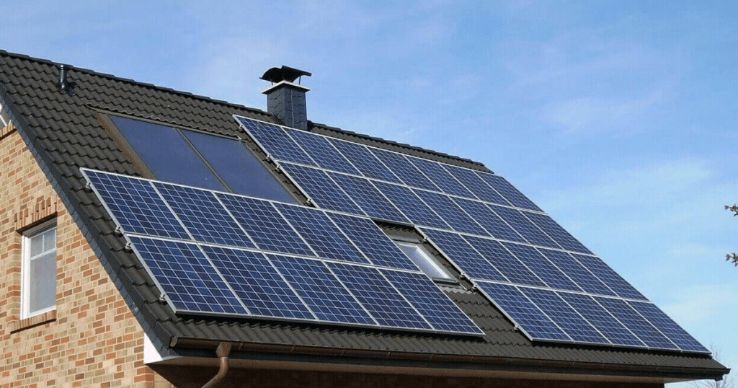
Image Source: Greenmatch
How often do solar batteries need to be replaced? Solar batteries degrade over time, just like regular batteries. The kind and brand determine its 5 to 15-year lifespan. Sometimes a battery’s warranty duration can indicate its lifespan. Warranty considerations:
- Average lifespan
- Circularity
- Throughput
A guarantee is needed since battery performance degrades over time. Guaranteeing a certain number of cycles or years is essential. Guarantee the battery’s throughput or capacity. Consider a 10-year-old battery. After ten years, its capacity will be 70%. A battery’s performance drops faster if it goes through several cycles in a year. ‘Cycle’ means entirely charging and discharging a solar battery. Heavy use shortens a battery’s life. Battery energy works during uninterruptible power supply under your desk or in your server room and can maintain operations during power outages.
Round-trip Efficiency
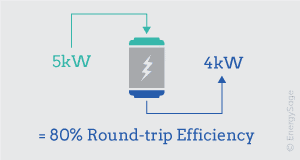
Image Source: Infinity Renewables
The percentage of the electricity initially stored and then retrieved is referred to as the round-trip efficiency. The amount of energy wasted during the storage process is proportional to the system’s round-trip efficiency. Coulombic efficiency (CE) and voltage efficiency assess a battery’s energy efficiency. CE measures electron transport during charge and discharge and electron loss per cycle.
Often, a coulomb counter is utilized. Higher CE, lesser electron loss, and better battery life. Voltage efficiency is the voltage difference between charging and discharging, produced by over-potential. This difference determines how efficient a rechargeable battery is. Batteries have 75% to 90% of RTE, and compressed air has 65% to 75% of RTE. The efficiency of lithium-ion batteries is exceptionally high (about 95% on average), whereas the efficiency of lead-acid batteries typically ranges between 75% and 80%.
Capacity & Power
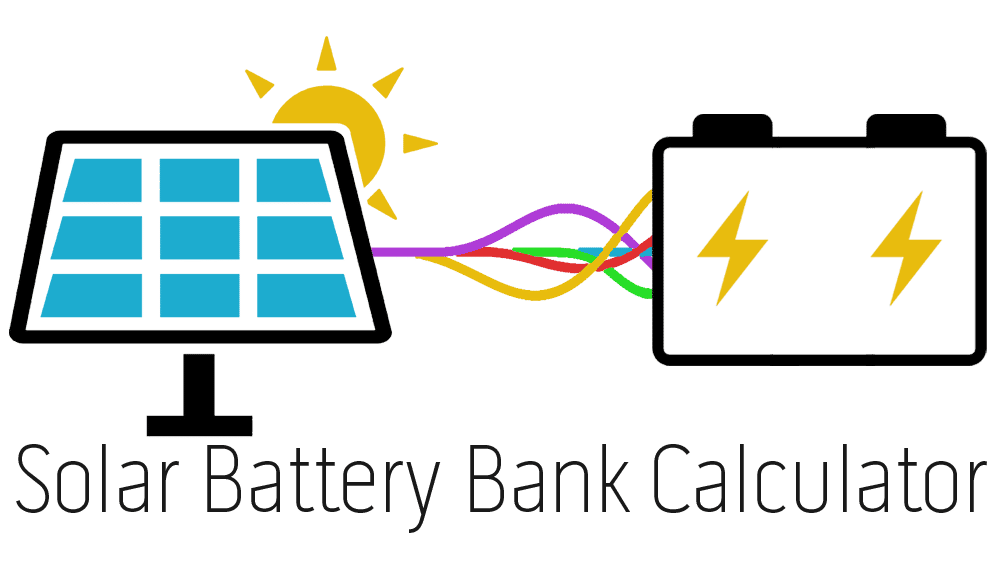
Image source: Solar Battery Bank
The battery’s capacity to store energy is referred to as its power capacity. This power is frequently denoted in terms of Watt-hours. A watt-hour is calculated by multiplying the voltage (V) produced by the quantity of current (Amps) the battery can make for a specific period. Wh- is calculated by taking volts * amps * hours, based on this battery reserve capacity to ah guide.
However, a battery’s current capacity (power) is often limited. A 1 Ah coin cell can’t even provide 0.1 Amp for an hour without overheating. It’s like stating a person can walk 30 miles vs. run 30 miles. A 1Ah coin cell can provide 1mA for 1000 hours but 100mA for less than 10 hours. Most solar batteries are lead-acid or lithium-ion. Lithium-ion batteries have a longer lifespan and can store more solar energy. Saltwater and lead-acid batteries are cheaper.
Depth of Discharge (DoD)
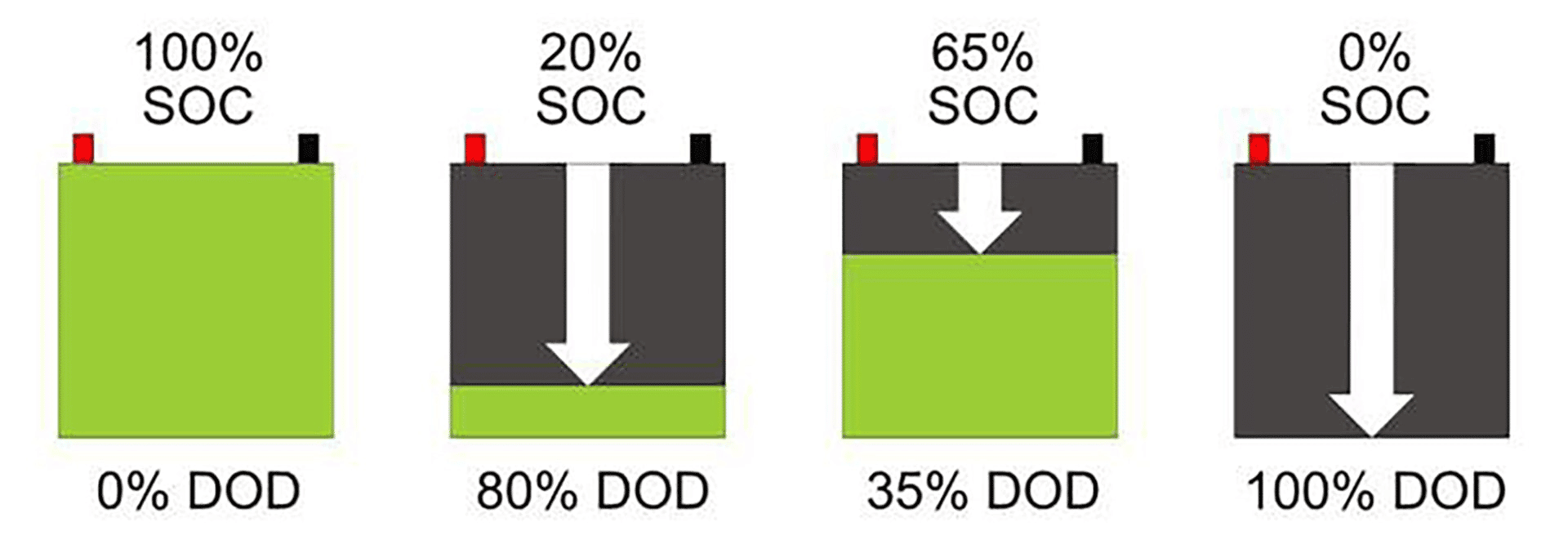
Image source: Simpliphi
The Depth of Discharge (DOD) measures the volume of energy flowing into and out of the battery during a single cycle. The value is often a percentage of the battery’s overall capacity. Lead-acid agm batteries have a recommended DoD of about 50%, indicating you shouldn’t use more than half of their capacity to prevent damage or early system deterioration. What about deep discharge? This occurs when the voltage in the cell falls noticeably below the cut-off voltage.
This occurrence by itself has no adverse effects on safety. However, it gradually degrades the cell’s performance, which in some cases might result in battery swelling. For instance, a depth of discharge of 80 kWh is equal to 80% of the battery’s overall capacity if it has a 100kWh capacity. The stable range is 40-80%; the battery will steadily deplete and output the rated voltage.
Solar Battery Manufacturer Strengths

Image Source: Sunlypower
Solar panels are a renewable energy source. It’s always available. Solar energy is unlimited. Sunlight will remain open for at least 5 billion years after the sun dies. Low-maintenance solar panels. Once a year is plenty. Solar power can reduce your energy expenditures. How much you save on your bill depends on the size and usage of your solar system. Creates jobs by employing solar battery manufacturers, installers, etc., and, in turn, helps the economy.
Manufacturing complexity and multiscale morphology (A) Schematic of battery production. (B) Multiscale battery structure for electric vehicles. Manufacturing lithium-ion batteries (LIBs) involves complex processes. Cell abnormalities can cause immediate failure or chronic degeneration depending on their structural and chemical properties, despite efforts to create high-quality batteries.
Types of Solar Batteries
Lead-Acid Batteries
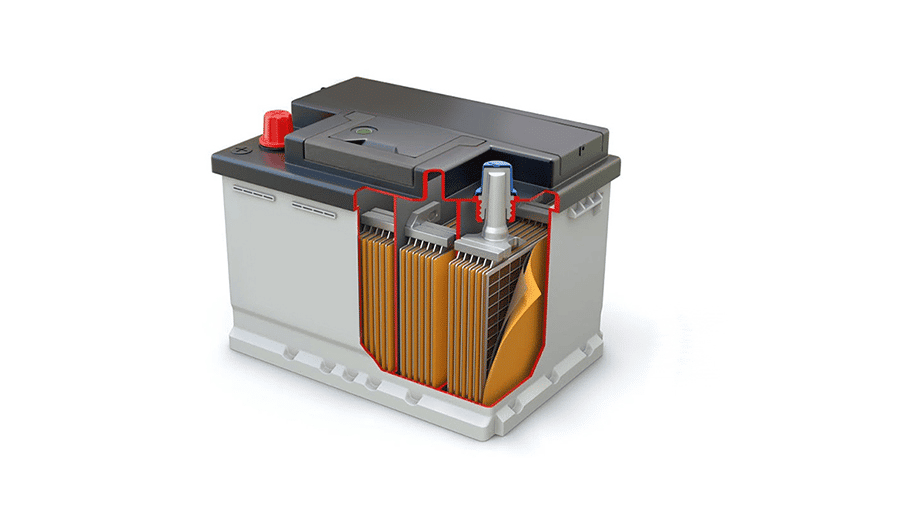
Image Source: Suzuki Battery
The earliest and cheapest solar battery options. Their capacity is lower than other batteries. More lead-acid batteries will be needed to accomplish the same activities as lithium-ion batteries. Lead-acid batteries have a 50% DoD and a 5- to 10-year lifetime. Despite being the least expensive alternative, they didn’t take advantage of portable enegy storage system thus they are not frequently used to power homes. They are ideal when used for DIY solar projects, in the event of a power failure, emergency backup storage, and solar energy systems for off-grid holiday cabins. Two lead-acid battery types exist:
- Flooded lead-acid (FLA) battery
- Sealed lead-acid (SLA) battery
Lithium-ion Batteries
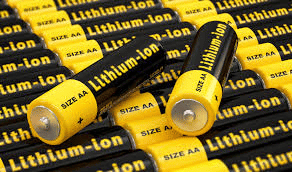
Image Source: Volts
Solar applications have grown in popularity. Lithium-ion batteries are expensive for many reasons. DoD-high, Longer lifespan, No maintenance, 10-year lifespan, Energy efficiency, Extra storage, No off-gassing/ventilation, Smaller than lead-acid batteries, Lithium-ion solar batteries might be leaked if not frequently used. Best for small-space solar installations. Lithium-ion batteries are used in various sectors, including the automotive, telecommunications, IT, and aviation industries. Types of lithium-ion batteries:
- Lithium Cobalt Oxide
- Lithium Manganese Oxide
- Lithium Iron Phosphate (LFP)
- Lithium Nickel Manganese Cobalt Oxide (NMC)
- Lithium Nickel Cobalt Aluminum Oxide
- Lithium Titanate
LiFePO4 Batteries
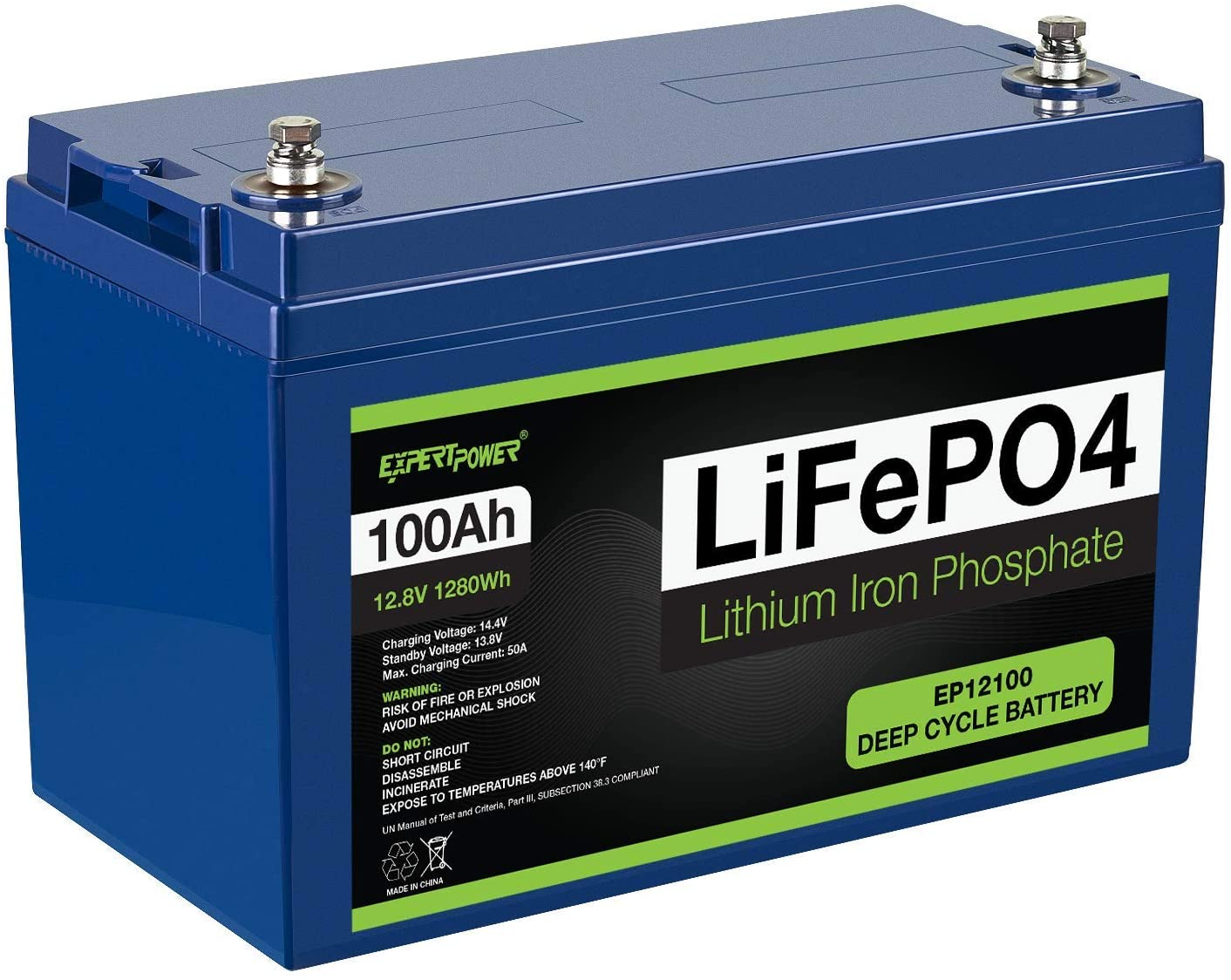
Image Source: Norton
Lithium iron phosphate (LiFePO4) batteries are a particular kind of lithium-ion (Li-Ion) rechargeable battery. They offer greater power output, quicker charging, lighter weight, and longer lifetime than the more conventional cobalt-based Li-Ion batteries. Because LiFePo4 batteries are significantly lighter than traditional lead acid batteries and have a significantly longer cycle life, the lifepo4 battery produced by manufacutrer in kayak motors and small boats. Three types of cells are used in lithium batteries:
- Cylindrical
- Prismatica
- pouch cells.
All cells are lithium iron phosphate (LiFePO4) and 3.2 volts (V).
Nickel-cadmium Batteries
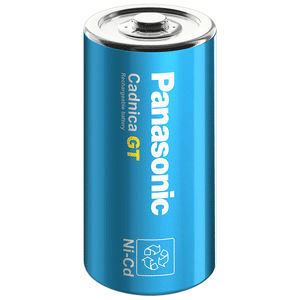
Image Source: Direct Industry
Ni-Cd is a long-lasting battery if adequately maintained. It needs periodic total discharges to last. It’s maintenance-free and works at harsh temperatures. Cadmium is a hazardous element; hence this battery is banned in several countries. Ni-Cad batteries lose charge quickly. They’re less popular than lead-acid or lithium batteries. A nickel-cadmium battery (NiCd or NiCad) is a rechargeable battery used in portable computers, drills, and camcorders. NiCds use nickel oxide hydroxide, cadmium, and potassium hydroxide electrolyte. Best for Large-scale solar energy storage applications. There are two types of NiCd batteries:
- Sealed
- Vented.
Saltwater Batteries
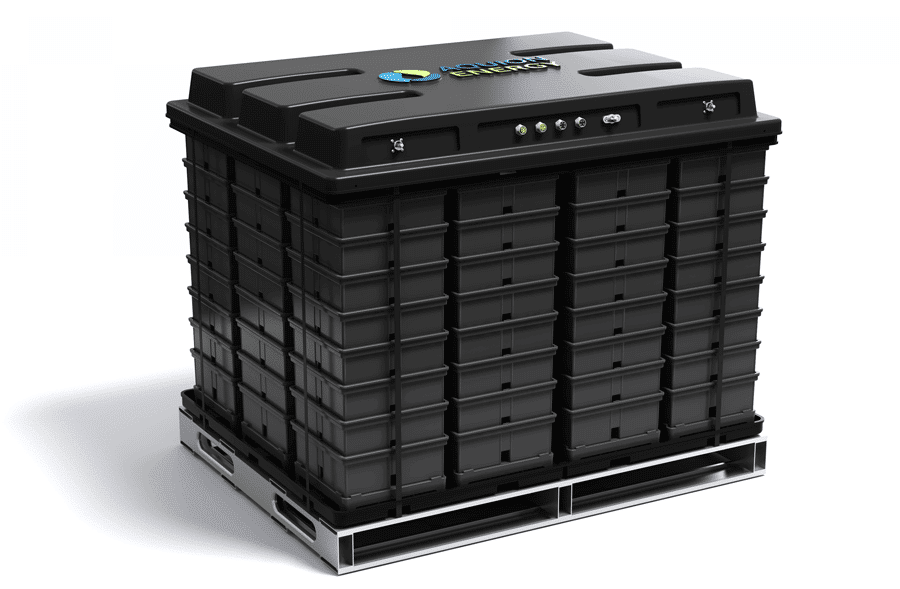
Image Source: Energy Storage News
Its electrolyte is salt water, and it doesn’t use heavy metals, making it the most environmentally friendly solar battery. Saltwater batteries can be maintained and last for a while. Saltwater batteries are fresh and store energy well. Saltwater batteries efficiently store solar energy. They’re safer but bulkier. Saltwater electrolyte is non-toxic and non-explosive. Expensive manufacturing limits market availability. Growing the sector may help reduce resources. Concentrated saltwater or saline solutions are used in these batteries to capture electricity for later usage. Later, the electricity that has been stored is used to power up electronic devices.
Flow Batteries
An electrolyte liquid with a water base is present in a flow battery. Because it is 100% DoD, fire-resistant, low-maintenance, and has a 30-year lifespan, it is becoming popular. However, because of its bigger size and higher cost than other battery types, it is less appropriate for domestic use. It also has a low storage capacity and charge and discharge rates. They can be utilized in electric vehicles that need energy as fast as combustion engines. Large-scale installations are what they work best for. There are three types of flow batteries:
- Redox
- Hybrid
- Membraneless.
Deep Cycle Solar Batteries
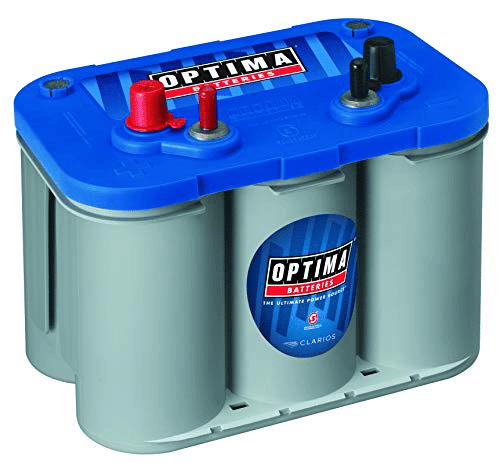
Image Source: Alternative Energy
When talking about solar batteries, the term “deep cycle” refers to the ability of the battery to go through a cycle of being discharged and recharged multiple times. In this category of solar batteries, some examples are lithium-ion, flooded, and gel batteries. Deep cycle battery technology is also employed in various other contexts, including solar, marine, recreational, mobility scooters, and all kinds of electric vehicles. High-rate batteries are often used in backup or emergency-use applications to distinguish themselves. The most common type is deep-cycle lithium batteries.
Which solar batteries last the longest?
How long do solar batteries last? You can find answers in the post How Long Does a Portable Power Station Last since portable power station is also a type of solar battery, like a china portable power station. Lead-acid, lithium-ion and saltwater are the most common solar batteries. Lithium-ion batteries last the longest. IEC 62133 is one of the essential export standards for lithium-ion batteries used in IT equipment, tools, lab, consumer electronics, and medical equipment.
Solar battery no need for frequent replacement
What is the lifespan of a solar battery? Home solar battery systems have a lifespan of 5 years. To match the 20-to-30-year lifespan of your solar power system, it is almost certain that you will need to replace your solar battery if you decide to install one today.
What are the best batteries for solar power storage?
In terms of solar batteries, lead-acid and lithium-ion are the two most common varieties. Due to their greater capacity for storing solar energy and longer lifespan, lithium-ion batteries are the best choice. Saltwater and lead-acid batteries, however, are more reasonably priced.
Find the best solar battery for your home.
Selecting the ideal solar battery for your house may be challenging, but Sunly (www.sunlypower.com) as a professional lithium battery supplier and home energy storage service provider is here to help you break down and analyze what you need and give you a free quote for the model you desire. They’ll help you find a safer, healthier energy source.

